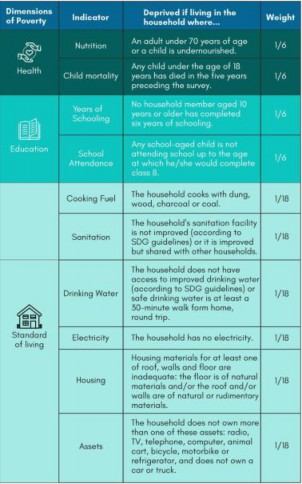About Multidimensional Poverty Index

♤ It was developed in 2010 by the Oxford Poverty and Human Development Initiative (OPHI) and the United Nations Development Programme (UNDP).
♤ The global Multidimensional Poverty Index (MPI) is an international measure of acute multidimensional poverty covering over 100 developing countries.
♤ The MPI goes beyond income as the sole indicator for poverty, by exploring the ways in which people experience poverty in their health, education, and standard of living. It captures both the incidence and intensity of poverty.
o The MPI assesses poverty at the individual level.
o If someone is deprived in three or more of ten (weighted) indicators, the global index identifies them as ‘MPI poor’, and the extent – or intensity – of their poverty is measured by the percentage of deprivations they are experiencing.
♤ The global MPI can be used to create a comprehensive picture of people living in poverty, and permits comparisons both across countries and world regions, and within countries by ethnic group, urban/rural area, subnational region, and age group, as well as other key household and community characteristics.
♤ It complements the international $1.90 a day poverty rate by showing the nature and extent of overlapping deprivations for each person.
♤ The 2019 update of the global MPI covers 101 countries—31 low income, 68 middle income and 2 high income.
